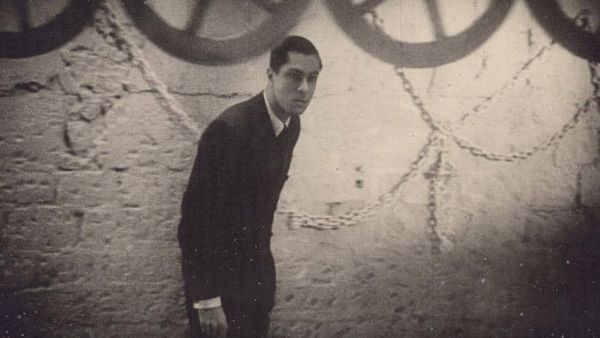Eye For Film >> Movies >> Vampyr (1932) DVD Review

This is a new, high-definition transfer of the Martin Koerber/Cineteca di Bologna film restoration in its original aspect ratio of 1.19:1. The picture and sound quality are excellent and the extras are a rewarding crop indeed.
Two full-length commentaries are available and complement each other very well. The first, by film historian Tony Rayns, is good on the history of the production and how it fits into Dreyer’s career as a whole. The second is by Guillermo del Toro. At first it looks set to be a gushing fanboy love letter (albeit an entertaining one) but he’s actually very shrewd on aspects such as the film’s links to mediaeval memento mori art and the Lutheran Protestant aspects of Dreyer’s treatment of the vampire myth.

There’s also a ‘visual essay’ on the film by Dreyer scholar Casper Tybgerg, which rounds out Rayns’ commentary nicely and a documentary from the 60s based around the premiere of Dreyer’s last film Gertrud. The great and good of French cinema (including a very young and cool-looking Francois Truffaut) line up to pay homage to the great man and there’s plenty of on-set footage, plus a lengthy interview. It’s very good on the bigger picture of Dreyer’s career, though the Vampyr segment duplicates some of the material from the ‘visual essay’.
A documentary on de Gunzburg is included in the menu but wasn’t on the promo copy sent to me. The ‘deleted scenes’ section isn’t the cornucopia of newly-unearthed gems you might have hoped for, being merely the few seconds from the climax that the German censor insisted on removing. You can see why; for their day they are pretty graphic and add to the intensity of Dreyer’s vision.
The full copy also includes an 80-page book featuring rare production stills, a facsimile reproduction of the 1932 Danish film programme, writing by Tom Milne (The Cinema of Carl Dreyer), Jean and Dale Drum (My Only Great Passion: The Life and Films of Carl Th. Dreyer), and Martin Koerber (film restorer), plus a pdf of Sheridan Le Fanu’s short story Carmilla - the inspiration for the film - which I can only lament not being included with my review disc.
Finally, there’s an option to watch the film without subtitles which, given that it was originally intended to be a silent and plays like one in many respects, could be rewarding. All in all (and forgive the pun) plenty to get your teeth into.
Reviewed on: 02 Sep 2008
















